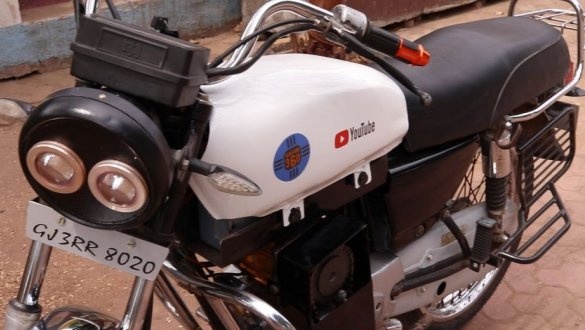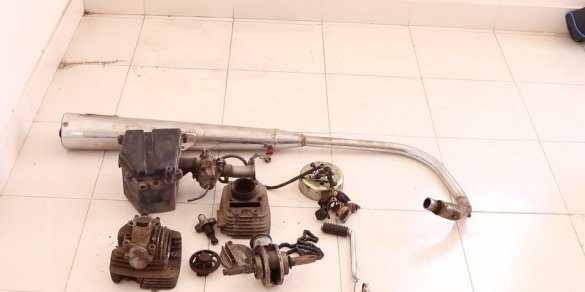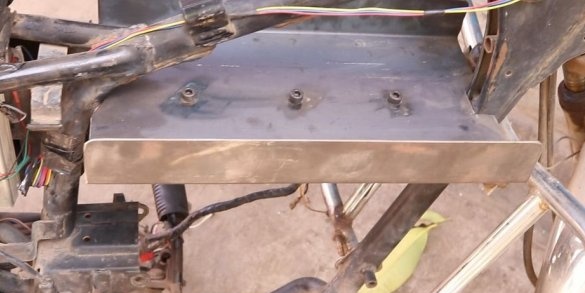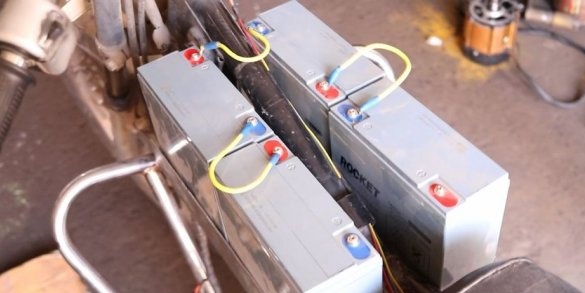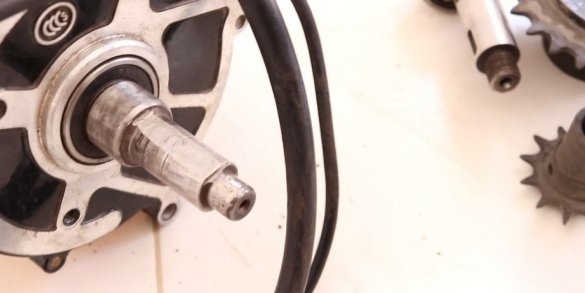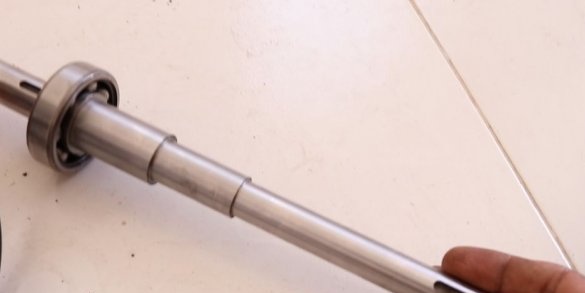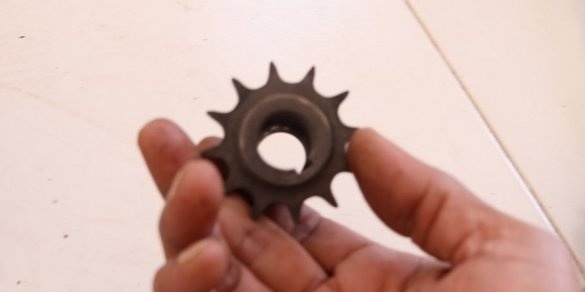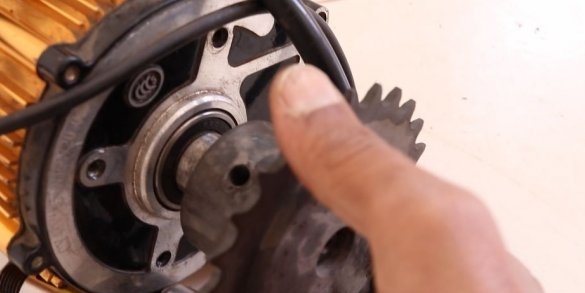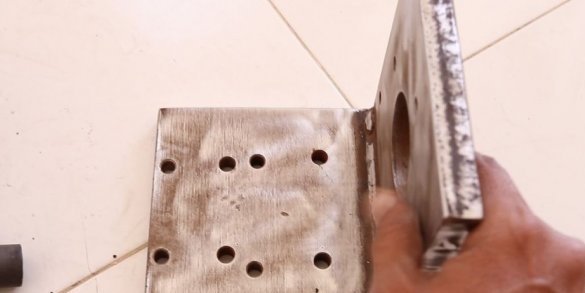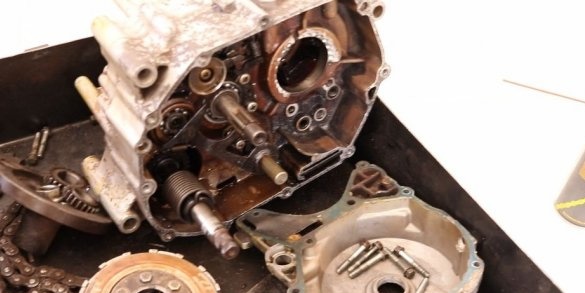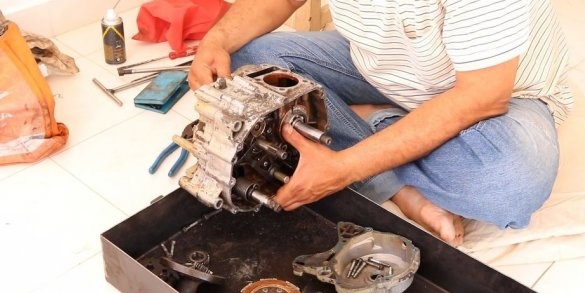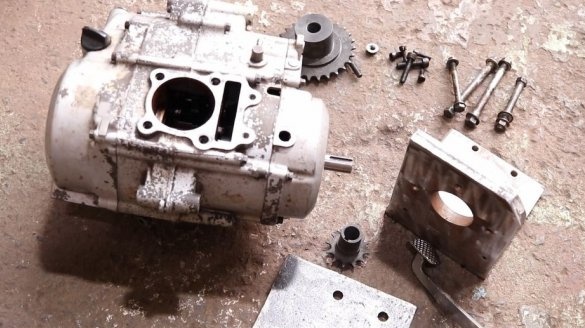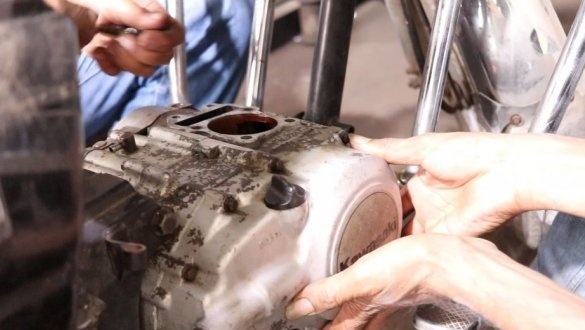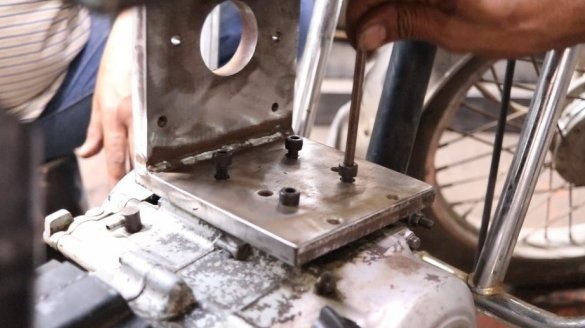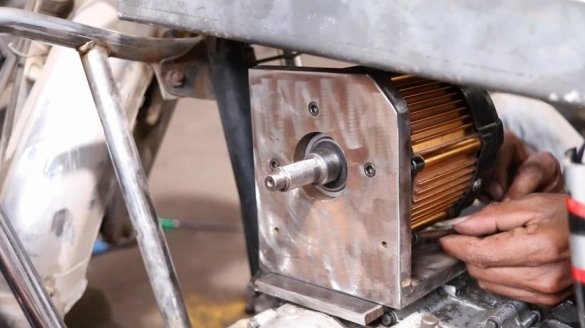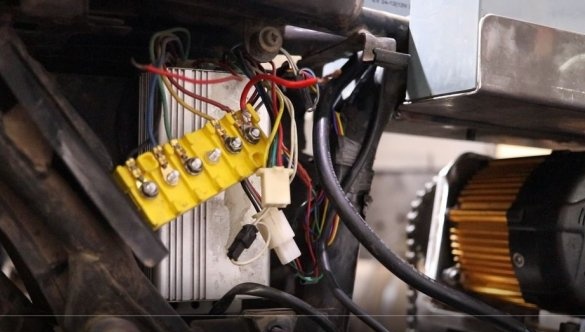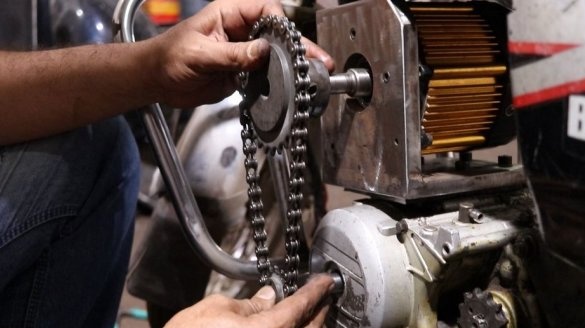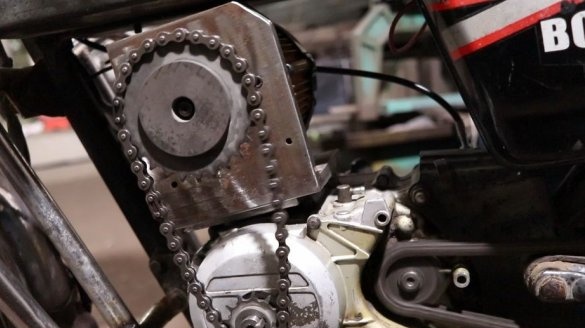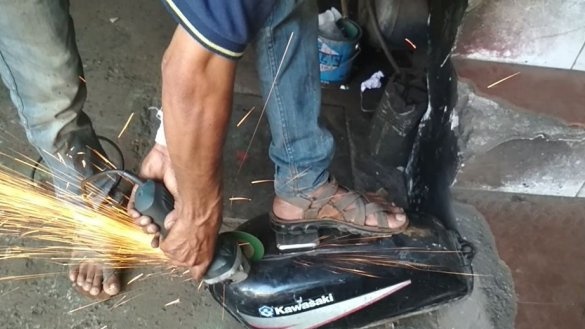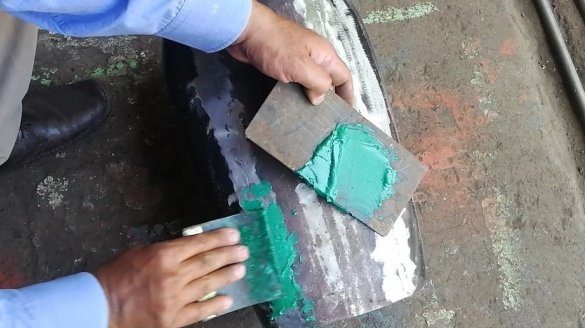An interesting alteration was made by a master from India, setting on motorcycle electric motor and batteries. Interestingly, the standard gearbox remains a part of the electric motorcycle. But let's give the floor to the master (with my edits).
This project is special since the master made an electric motorcycle, which also became India's first electric four-gear motorcycle. He always wondered why a gearbox was not used to increase the efficiency of electrical engineering. The idea of creating an electric motorcycle gearbox was to create a suburban or street bike with zero emissions, which can easily carry any person, two people and can travel at a decent speed. He is not far behind in a fast moving city. It can also carry loads when lifting more than 35 degrees. The donor motorcycle that the master used was in very poor condition. This project took six months, because he wanted all the above criteria to be on the bike. In a donor motorcycle, the master used a frame and gearbox. To use a four-speed gearbox, he had to replace the crankshaft with a custom one. In addition, a thick engine plate was made to mount the engine to the gearbox. This project turned out to be really very good and even exceeded all my expectations. To use the four-speed gearbox on an electric bike, I had to replace the main crankshaft with a custom one. In addition, a thick engine plate was made to mount the engine to the gearbox to make it a full four-gear electric motor.
Many of his friends asked why the gearbox?
1) The best torque on a low-power engine.
2) Electric vehicles are generally heavy to lift. With the box, this drawback is eliminated.
3) Less battery consumption due to gears improving battery life and system efficiency
4) Higher payload due to gears
5) The master used an engine with a power of 1000 W, which produces barely 2000 rpm on the shaft, but he managed to find a balance between performance and power only because of a system with a gearbox.
The first photo shows the components or parts that are removed. Bajaj Boxer is a 100 cc suburban motorcycle. See, which is widely available in India. The master received a motorcycle at the price of scrap metal and got to work. Details were removed from the frame. Then a battery compartment was installed on the frame. The batteries were installed and the batteries were mounted.
The 1000 W 48 V rickshaw motor has been modified. The motor is mainly intended for use with the rear wheel gear of a three-wheeled vehicle. There was a small gear on the motor shaft. The master turned this gear to a rounded shaft and grind the plane onto the shaft to secure the chain sprocket with the set screws. The original engine crankshaft was removed and replaced with a special shaft, and the drive sprocket will be fixed on the other side where the motorcycle magneto is installed. The shaft comes out of the cover and a lower sprocket is mounted on it. A mounting plate is installed in place of the cylinder.
A specially selected shaft is installed instead of the crankshaft and the engine is assembled. Then gear oil is poured into it.
Installs the bottom of the engine. Screws the plate. Installs an electric motor.
Performs installation of electrical parts.
Installs chains on the sprocket of the electric motor - boxes and boxes - of the rear wheel.
He made the battery cover out of a gas tank. I cut it, welded a plate between two halves. Putty and painted.
That's the whole alteration. According to the master, an electric motorcycle develops a speed of 47.5 km / h. The battery is installed at 48 V 24 Ah.
The video shows the entire process of remaking a motorcycle, as well as a demonstration of its operation.

